Like pairing typefaces, layering clothing or accessorizing a room, the trick to a successful garden design is layering textures. Once you have mastered the art of caring for plants, you can work toward a cohesive and visually interesting garden design. Color, pruning, shape, size and the feel of your plants all contribute to your garden's style. Learn how to play around with various textures to create a lush outdoor space with interest and depth.
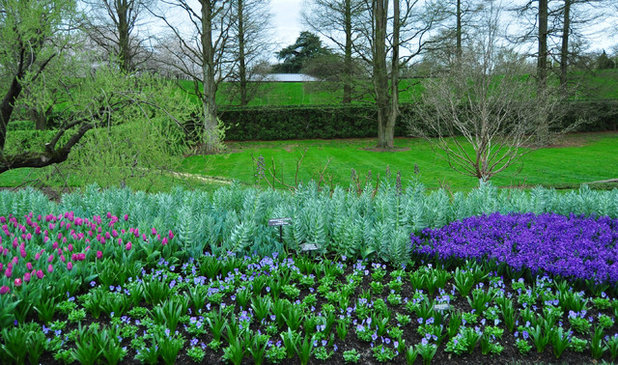
Amy Renea
What Does Texture Look Like? When texture is layered correctly, it makes you want to run your hands over the tapestry to feel the different layers. Don't you want to reach out and touch that beautiful bed of blues and purples?
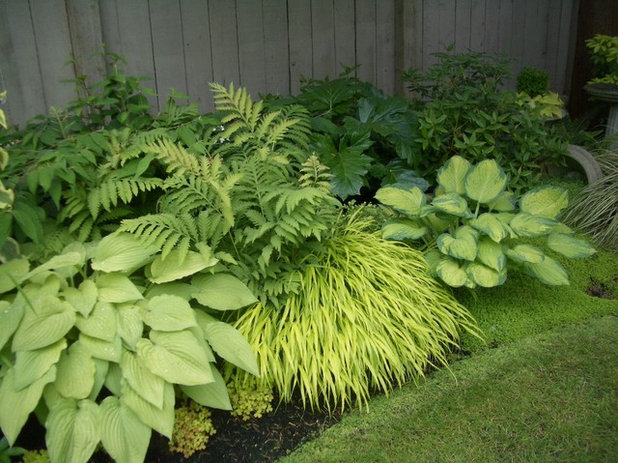
Glenna Partridge Garden Design
The combination of hostas, ferns and grasses in this photo provides layers of texture that create visual interest, even though there are no blooms.
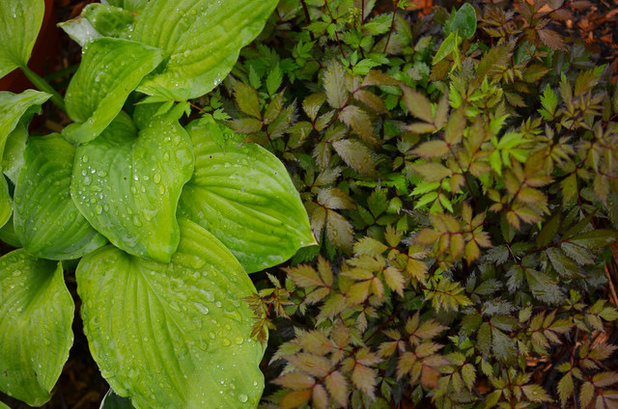
Amy Renea
Combine Contrasting PlantsStart out with one wide-leaf plant and one small-leaf plant and see how they look together. Spend an hour or so in your local nursery combining various plants and see what looks complementary.
The big, bold and shiny leaves of hostas make them a perfect candidate for beginners. They combine well with many other plants but look compelling next to smaller-leaf plants with sharp tips.
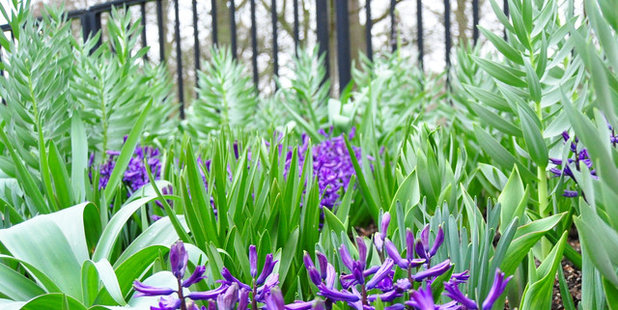
Amy Renea
Combining a plant with blooming spikes with another plant with foliage spikes creates an interesting play on form and texture. When the two plants are out of bloom, the textures are divergent. But when they're both in bloom, the similar forms are differentiated by the vibrant purple colors.
This is what makes gardening such an intense form of design. It is ever changing — plants morph from one season to the next, and it's a constant battle to simply keep them alive. Can you imagine if your area rugs needed a certain amount of water and food to keep up appearances?
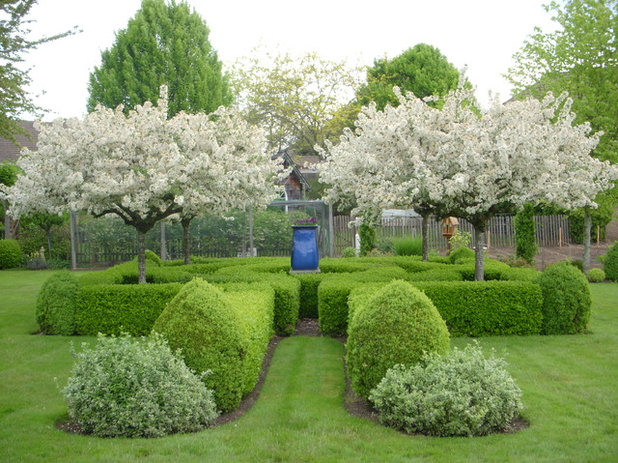 Prune for Texture
Prune for TextureFormal gardens rely on structure to provide interesting design, but texture is important too. Notice how the smooth, shorn hedges contrast with the blooming bushes and trees. Imagine the difference between the two if you were to run your hand over them. One would feel light and free, the other straight and solid.
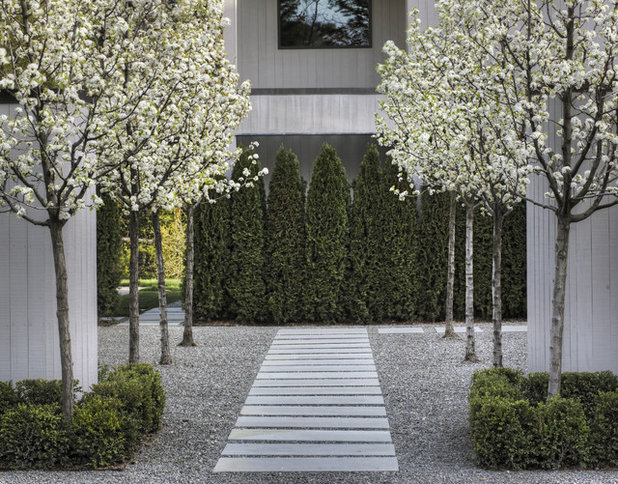
Terra Ferma Landscapes
In a more modern setting, shorn evergreens and flowering trees achieve the same effect.
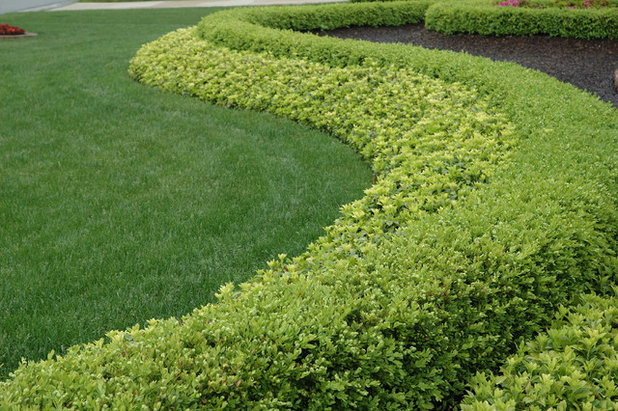
Land Architects, Inc.
Stick With One UndertoneWhen combining textures, it is best to start out with plants that have the same undertones. Combining blue and yellow undertones is tricky business, so stick with one or the other. This combination offers textural differences with a yellow undertone.
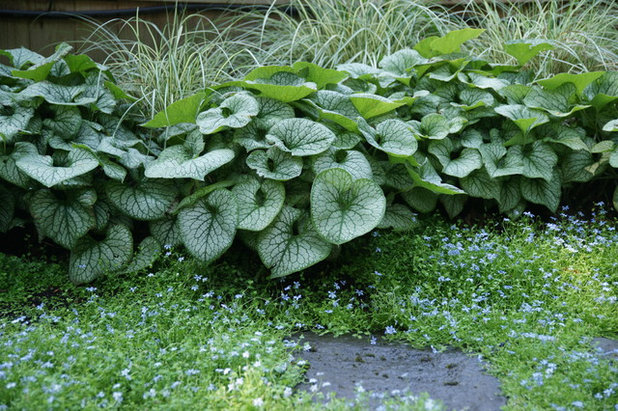
Creative Garden Spaces
If you want to go for blues, brunnera (center), blue hostas and blue fescue are good choices.
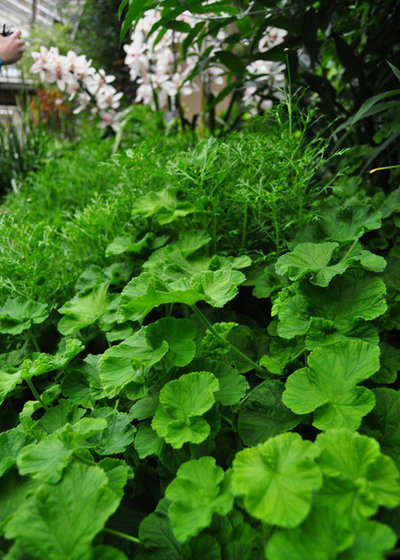
Amy Renea
You can also go with a true green palette. This plant pairing is the same exact shade of green. Out of bloom, the only contrast between the two is the texture. The large leaves cascade down like a waterfall, contrasting with the upright ferny foliage in the background. Try planting geranium and chamomile for this look at home.
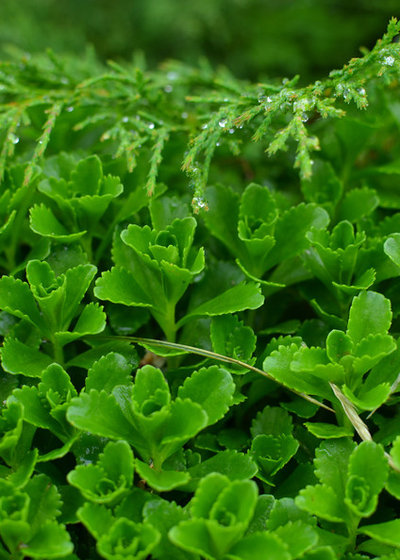
Amy Renea
Here is another example of combining textures without a color contrast. Notice how the evergreen seems to almost blanket the sedum with its branches, creating a visually interesting effect.
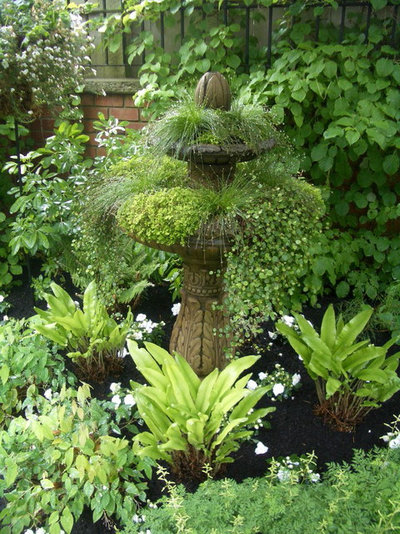
Glenna Partridge Garden Design
This article just barely cracks the surface of combining textures in the garden. Experimenting is the best experience for beginning gardeners, so get out there and try your hand at designing with frilly foliage, slick leaves and other unexpected combinations.





